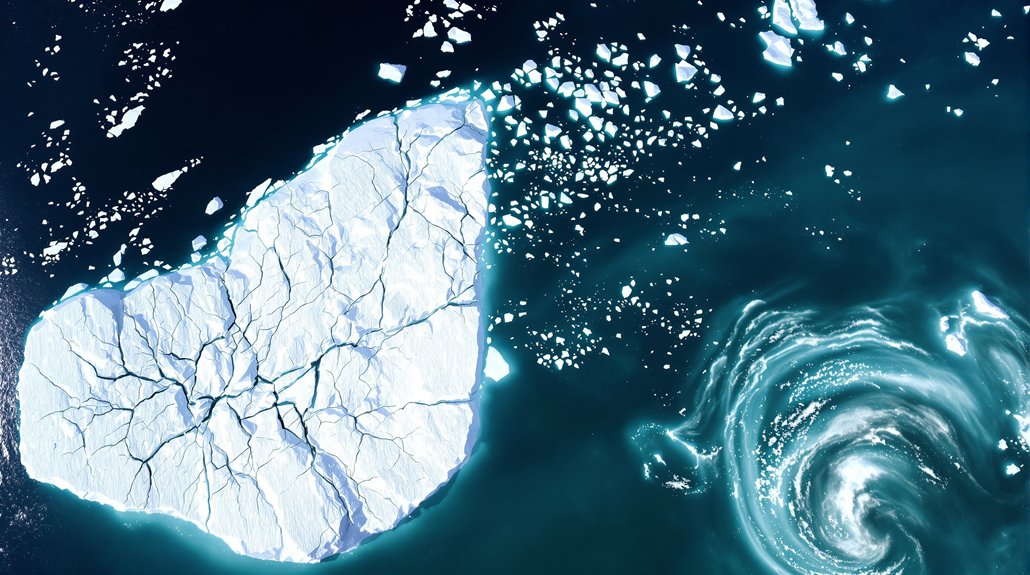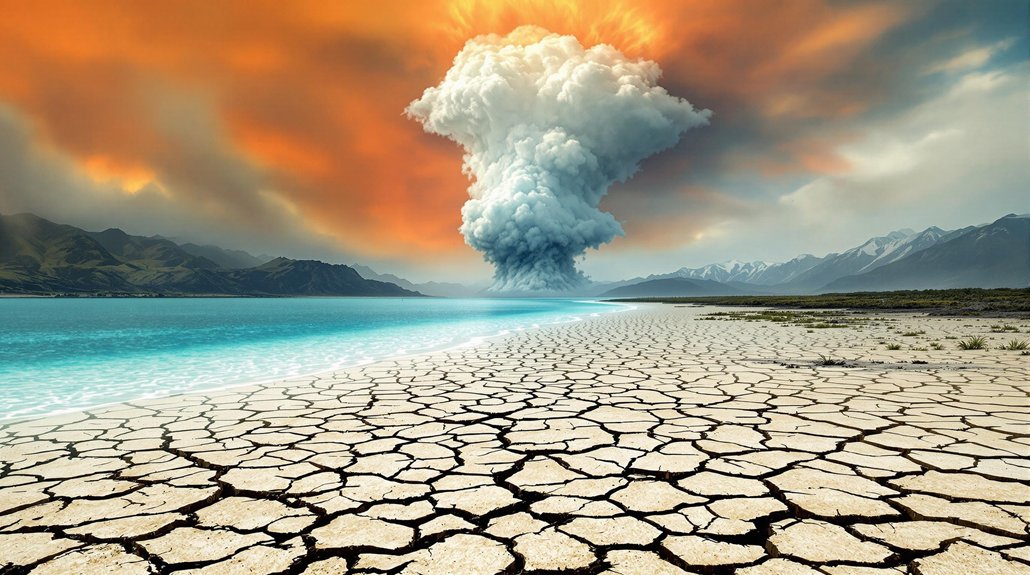After years of slow, inevitable fracturing, Antarctica’s giant iceberg A-68 has finally disintegrated into the Southern Ocean. This massive chunk of ice, measuring approximately 5,800 square kilometers—roughly the size of Delaware—broke free from the Larsen C Ice Shelf in July 2017. It wasn’t just big. It was a trillion-ton behemoth, 200 meters thick, that scientists had been watching for decades.
The death of A-68 wasn’t sudden. Not even close. Its formation involved a complex network of cracks developing over months and years. Mother Nature takes her sweet time with these things. The iceberg’s slow-motion breakup revealed more than 11 smaller bergs as it fragmented during its northward journey. Nature’s puzzle, coming apart piece by piece.
Scientists track these frozen giants using satellite imagery from the European Space Agency and Copernicus programs. They sit in warm offices, watching cold monsters drift across screens. The technology has advanced to near real-time monitoring, which is pretty handy when a chunk of ice bigger than some countries decides to go for a swim.
A-68’s departure was like pulling a cork from a bottle. Without this icy barrier, glaciers flow faster into the ocean. Sea levels rise. It’s simple physics with complicated consequences.
These calvings expose seafloor areas that haven’t seen sunlight for centuries—new territory for scientific discovery. Researchers from eight countries scramble to study these virgin ecosystems before they change forever. Talk about exclusive access. The recent A-84 calving revealed 209 square miles of previously hidden seafloor that had been covered for an unknown period.
Meanwhile, other ice shelves are showing similar signs of stress. The Brunt Ice Shelf calved a 1,550 square kilometer iceberg in January 2023 after a crack called Chasm-1 finally completed its 35-year journey across the shelf.
A-68A traveled approximately 50 km from South Georgia island before its major fragmentation occurred in December 2020, likely due to stronger ocean currents in the area.
More recently, A-84 broke free from George VI Ice Shelf in January 2024.
The ice keeps breaking. Scientists keep watching. And somewhere in the Southern Ocean, the remnants of A-68 melt away, their trillion-ton weight distributed molecule by molecule into the rising sea.
References
- https://www.smithsonianmag.com/smart-news/a-chicago-sized-iceberg-broke-off-from-antarctica-revealing-a-hidden-ecosystem-never-seen-before-180986291/
- https://en.wikipedia.org/wiki/Iceberg_A-68
- https://www.bas.ac.uk/media-post/brunt-ice-shelf-in-antarctica-calves-giant-iceberg/
- https://abcnews.go.com/International/antarctic-iceberg-size-chicago-breaks-off-reveals-thriving/story?id=120330630
- https://www.esa.int/Applications/Observing_the_Earth/Copernicus/Giant_iceberg_breaks_away_from_Antarctic_ice_shelf








